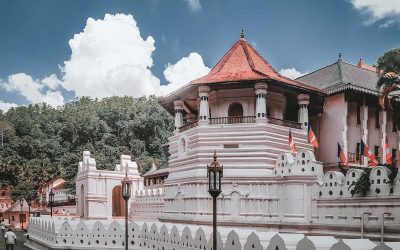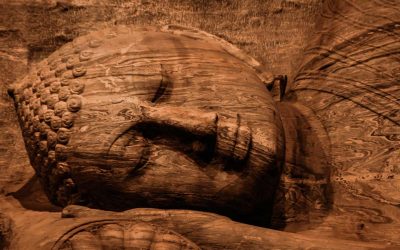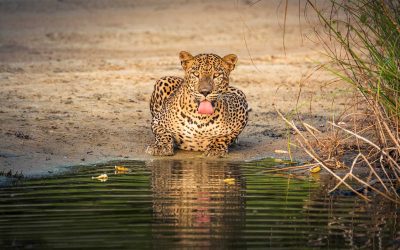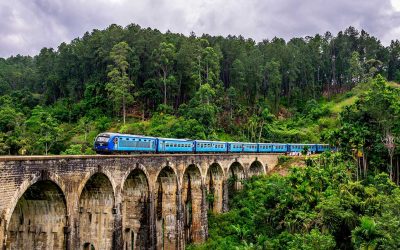Sri Lanka
Culture-
Sri Lanka is one of the few countries in the world with such a diverse cultural heritage. Sri means “blessed” in Sinhala, the majority’s native language, and Lanka is the island’s name. The culture is very distinctive in itself, contributing to the Sri Lankan identity. There are many customs and rituals in Sri Lankan culture that stretch back over 2000 years and have been passed down from generation to generation. The country has a long and illustrious artistic legacy, encompassing music, dance, and the visual arts. Cricket, a distinct cuisine, an indigenous holistic health system, religious imagery like the Buddhist flag, exports such as tea, cinnamon, and gemstones, as well as a thriving tourism economy, are all part of Sri Lankan culture. Sri Lanka has always had relations with the Indian subcontinent, dating back to prehistoric times. The majority of Sri Lanka’s population is Sinhalese, with minorities of Sri Lankan Moor, Sri Lankan Tamil, Indian Tamil, Sri Lankan Malay, and Burgher. The most notable characteristic of Sri Lankan culture is its vibrant festivals, which are one of the country’s most popular tourist attractions. Religion has a significant influence on Sri Lankan culture and traditions. Sri Lankan cuisine is characterized by a wide range of spices that complement the cuisine’s distinctive flavour. Art is an important part of Sri Lanka’s history, presenting archaeologists and anthropologists with a literal goldmine of information on the Sri Lankan way of life. Art, from castles to frescoes, recounts history and culture, inspiring people with awe, devotion, and respect. Sri Lanka is one of the world’s largest and most successful tea producers. Tea is an important aspect of the culture since it is associated with hospitality; every family, without exception, serves tea to visitors. Sri Lankan tea is claimed to be consumed by the British Royal Family.
Wildlife-
Sri Lanka’s wildlife comprises its flora and fauna, as well as its natural habitats. Sri Lanka has one of the highest rates of biological endemism in the world, with 16 percent of the animals and 23% of flowering plants being endemic. In terms of biodiversity, Sri Lanka is second to none, and it is the greatest place outside of Africa to go on a big game safari. Sri Lanka’s wildlife credentials speak for themselves, as bold as that remark may seem. Sri Lanka has the world’s greatest seasonally recurring population of wild elephants. The Gathering takes place at the country’s Minneriya National Park, which is well-known across the world for being one of the best places to see elephant herds and observe their behaviour. In the past, herds of up to 400 elephants have been seen here. The Sri Lankan leopard is the jewel in Sri Lanka’s wildlife crown. Yala National Park is considered the finest spot-on Earth to watch leopards due to its unparalleled leopard population. Other wildcats that may be found in Sri Lanka’s wilds include jungle cats, civet cats, and rusty-spotted cats, in addition to the leopard. The sloth bear is more elusive, and their declining numbers have made finding them in the wild more difficult. The island is also known for being the finest site on the planet to see the blue whale, the world’s biggest mammal. The coasts of Mirissa and Trincomalee are the greatest places to see these majestic creatures, while Kalpitiya is known as one of the top ten best places in the world to see the stunning sperm whale — the world’s largest toothed whale. Mirissa also provides guests with the finest opportunity to witness both of these amazing ocean creatures on the same excursion.
Sri Lanka’s beautiful sand beaches and calm blue seas unfurl under the rays of a tropical sun. Coconut flavours and plentiful seafood combine with ever-friendly natives to create the most wonderful beach vacation spots. Stopovers at the coastal colonial fort city of Galle, as well as whale and dolphin viewing cruises along the coast, round out the itinerary. Sri Lanka is also a fantastic spot to visit if you enjoy birds. It includes hundreds of bird sanctuaries and Important Bird Areas where visitors may see a diverse range of avifauna. Almost every species of bird known in Sri Lanka can be found in the Kumana and Bundala National Parks, which are birding hotspots. The Sinharaja Bird Wave is another well-known Sri Lankan attraction, offering tourists the island’s largest and longest documented bird waves. Sri Lanka’s wildlife is one of the country’s most distinguishing attractions, and few nations can match its combination of large game safari animals, species concentrations, and tourism infrastructure. It is, without a doubt, the greatest safari destination.
Best places to visit in Sri Lanka-
- Yala National Park– Yala National Park, in southern Sri Lanka, is a huge natural sanctuary filled with animals. Yala is said to be the former realm of Ravana from the Hindu epic Ramayana, according to tradition. Elephants, bears and deer can now be found in dense forests, broad grasslands, and rocky outcrops, while wily crocodiles nest near many drinking holes.
- Kandy– Kandy was the last autonomous city and capital of the Singhalese monarchy, having been established in the 14th century. Kandy presents the world-famous Esala Perahera every year, a beautifully regal procession complete with adorned elephants, trumpet fanfares, and dressed drummers.
- Sigiriya Forest Reserve– Sigiriya, built on a monolith and rising above the surrounding forest in the 5th century, contains magnificent paintings that highlight silent testimonials to Sri Lanka’s moving past. The lovely village of Dambulla, located near Sigiriya, is noted for its Royal Cave Temple, Minneriya National Park, and Pidurangala Rock, among other must-see attractions.
- Galle- Galle, with its natural port and mild sea breezes, provides a unique historical and cultural perspective on Sri Lanka’s colonial past. You can travel to Unawatuna from Galle. Unawatuna is a seaside town famed for its magnificent beaches and coral reefs.
- Wadduwa- Wadduwa Beach is one of Sri Lanka’s most beautiful beaches. Its magnificent sunsets are absolutely spectacular, surrounded by coconut palms and colourful coral reefs. The tranquil waters of the Bentota River, which flows into the Indian Ocean, are great for a range of water activities, and the coral reefs make this a diver’s dream. Relax by eating seafood at a neighbouring restaurant at the end of the day.
- Wilpattu National Park- Located on the northwest coast lowland dry zone of Sri Lanka, the park is 30 km (19 mi) west of Anuradhapura and 26 km north of Puttalam. The occurrence of ‘Villu,’ or natural shallow indentations in the soil that allow rainfall to accumulate and be utilised by animals during the dry season, is a distinctive topographical characteristic of the Wilpattu National Park. The park is home to a diverse range of indigenous animals, including Asian Elephants, Sri Lankan Leopards, and Sri Lankan Sloth Bears.
- Horton Plains National Park- Horton Plains National Park is a national park in Sri Lanka’s central highlands, with montane grassland and cloud forest at a height of 2,100–2,300 m (6,900–7,500 ft). Other creatures found in the forest include the Wild Boa, Purple Faced Langur, Sri Lanka Superfowl, Magpie, Wood Pigeon, and Red Slender Loris. Birds and smaller animals, on the other hand, are considerably simpler to notice, to the point that the area is regarded as a birdwatcher’s paradise.
- Udawalawa National Park- The Udawalawe National Park is situated on the boundary of the provinces of Uva and Sabaragamuwa in Sri Lanka. In Udawalawe, there is a lot of variety. There are 33 reptile species, 184 bird species, 43 mammals, and 135 butterfly species in the park. There are additional chances of seeing water buffaloes, wild boars, crocodiles, peacocks, and spotted deer, in addition to leopards and elephants.
- Nuwara Eliya- Nuriwaya Eliya, dubbed “Little England” because of its cold climate and colonial-era bungalows, has a scenery that is considerably more striking than Britain’s. The old hill station is surrounded by mist-shrouded mountains and terraced tea estates, with world-class brews aplenty. The city serves as a jumping-off point for trips to Horton Plains National Park. In open grassy woods, this is a significant wildlife habitat. Leopards, sambars, and the rare purple-faced langur are among the animals that can be found here. The dull-blue flycatcher, Sri Lanka white-eye, and yellow-eared bulbul are all endemic highland birds.
10 Days Colonial Sri Lanka
The Colonial Sri Lanka 10 Day tour covers the Colonial past of Sri Lanka. You start and end your journey in Colombo. You travel to the hill capital Kandy, futher to tea-growing hills of Nuwara Eliya that has superb…
13 Days Cultural & Scenic Sri Lanka
Cultural & Scenic Sri Lanka will enable you to explore the cultural triangle of the country along with other main attractions the Emerald Island is known for. This tour includes ancient cities which are UNESCO …
11 Days South Coast, Serenity & Wildlife
This eleven-day tour focuses on the golden sandy beaches where you can relax and experience the real paradise along the Southern and Northern East coast where you will enjoy Sri Lanka’s azure sea life…
9 Days Temples & Tea Trails
Welcome to Sri Lanka, an island of lush green jungle and paddy fields, tea plantations and rock temples. Embark on your adventure starting in the idyllic capital Colombo, the Garden City of the East. Climb the…






